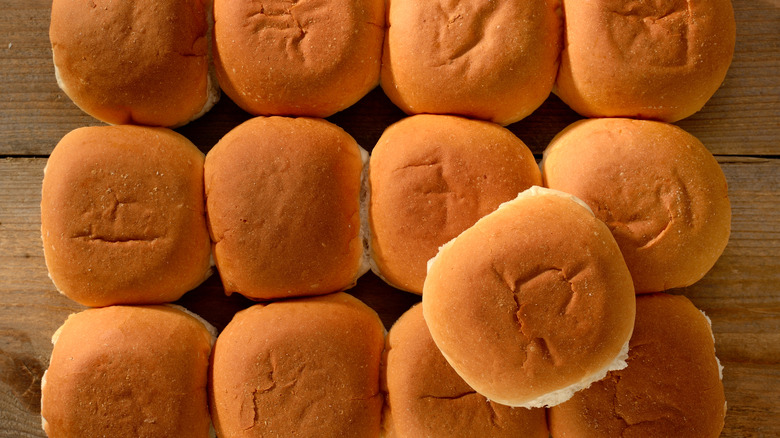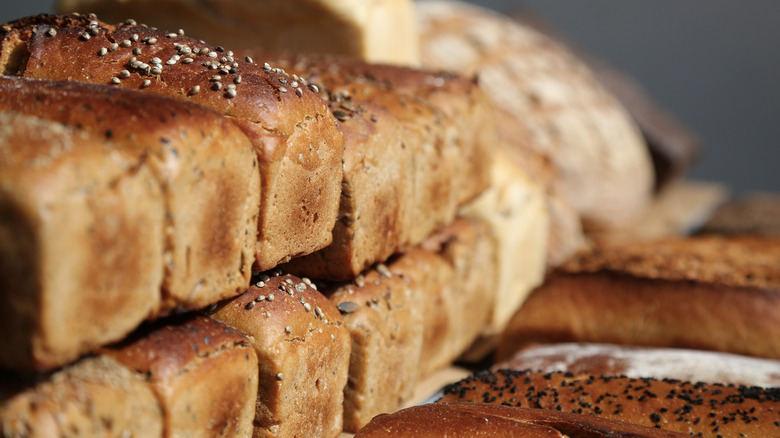The Medieval History Behind A Baker's Dozen
Ask for a baker's dozen of donuts, bagels, or any baked treat, and you'll get 13 items in your order — one more than the 12 you'd expect from a typical dozen. But how did a baker's dozen become a common term? The origin of this phrase dates back to a practice bakers and tradespeople in medieval England used to avoid punishment while selling their goods.
While there are a few possible stories that link the term to bakers being bad at math or simply being generous, the most widely accepted origin comes from around the (go figure) 13th century. Back then, dishonest bakers scammed customers by overcharging for smaller loaves. In 1266, King Henry III appointed a legal body known as the Assize of Bread and Ale to regulate the sale of bread by quality, weight, and price relative to the cost of wheat. Any baker caught violating the laws associated with this body would be subject to fines, beatings, or even imprisonment. In order to not be flogged, whenever bakers sold 12 loaves, they included an extra (typically smaller) loaf or end piece of bread as insurance that they hit the weight requirement.
The origin of the phrase stems from a 13th century bakers' practice
The practice became a way for bakers to cope with this legal standard imposed by the English king. Especially back then, even the most diligent baker wouldn't have been able to perfectly manage conditions like varying rise times and how much air would develop in each loaf. Two similar-sized loaves could have different weights because the yeast activity in one could create a different amount of air inside than another. Plus, many bakers didn't own scales and worked by feel.
While medieval bakers popularized the practice around the 13th century, the term "baker's dozen" didn't come into regular usage until much later. Whether bakers were selling one or 12 loaves, the extra bit they got in the habit of including, they called an inbread or a vantage loaf.
According to the Oxford English Dictionary, in 1599, the earliest known iteration of the term came in John Cooke's "Tu Quoque," in the nearly inscrutable sentence, "Mine's a baker's dozen: Master Bubble, tell your money." Later, in John Camden Hotten's 1860 publication of "A Dictionary of Modern Slang, Cant, and Vulgar Words," he describes a baker's dozen as "thirteen or fourteen" pieces, so, in rare instances, the term baker's dozen can actually refer to 14 items. But your modern baker is pretty well-equipped, so we advise you not to get greedy with your next order.

